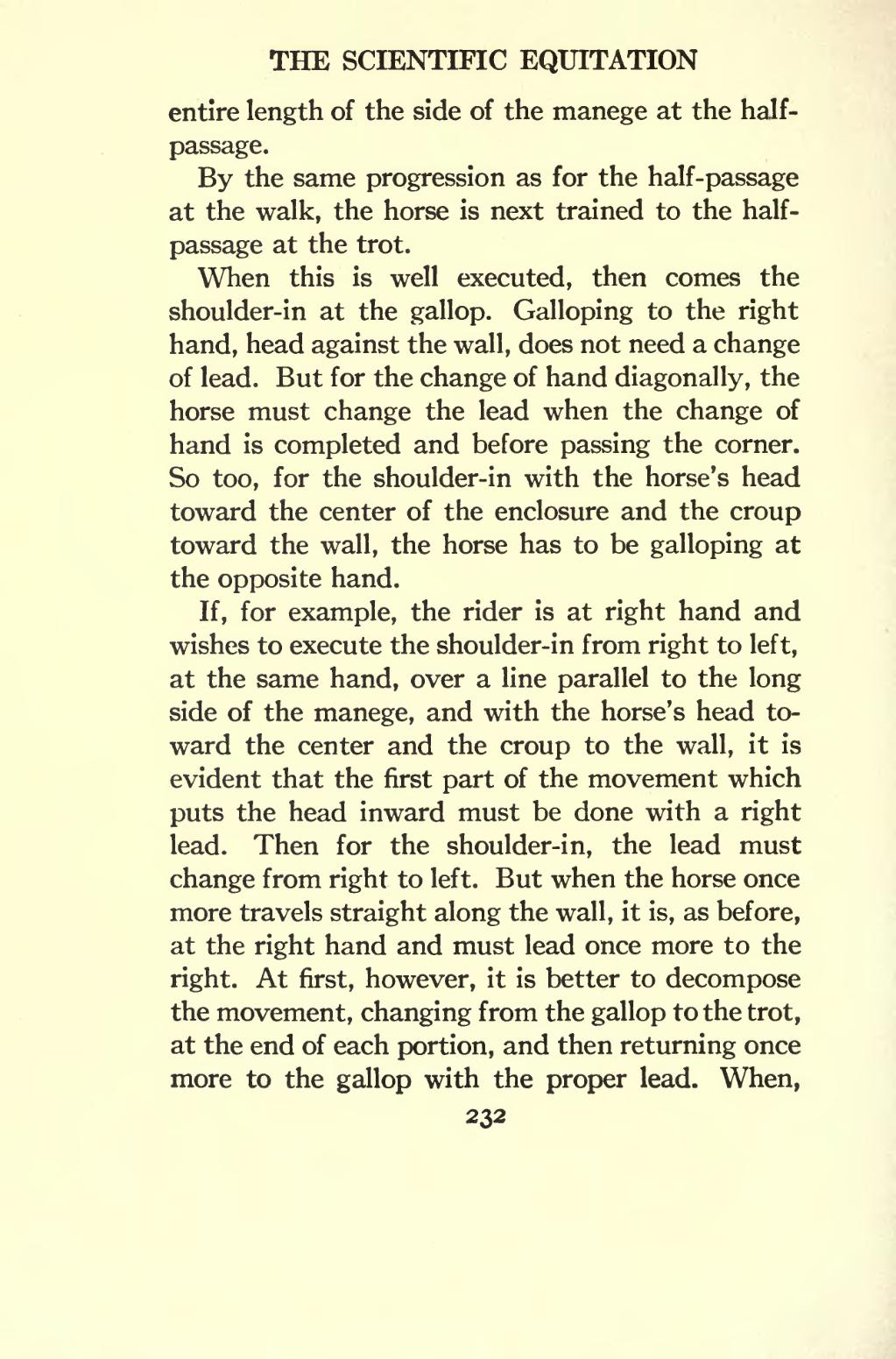entire length of the side of the manege at the half-passage.
By the same progression as for the half-passage at the walk, the horse is next trained to the half-passage at the trot.
When this is well executed, then comes the shoulder-in at the gallop. Galloping to the right hand, head against the wall, does not need a change of lead. But for the change of hand diagonally, the horse must change the lead when the change of hand is completed and before passing the corner. So too, for the shoulder-in with the horse's head toward the center of the enclosure and the croup toward the wall, the horse has to be galloping at the opposite hand.
If, for example, the rider is at right hand and wishes to execute the shoulder-in from right to left, at the same hand, over a line parallel to the long side of the manege, and with the horse's head toward the center and the croup to the wall, it is evident that the first part of the movement which puts the head inward must be done with a right lead. Then for the shoulder-in, the lead must change from right to left. But when the horse once more travels straight along the wall, it is, as before, at the right hand and must lead once more to the right. At first, however, it is better to decompose the movement, changing from the gallop to the trot, at the end of each portion, and then returning once more to the gallop with the proper lead. When,
